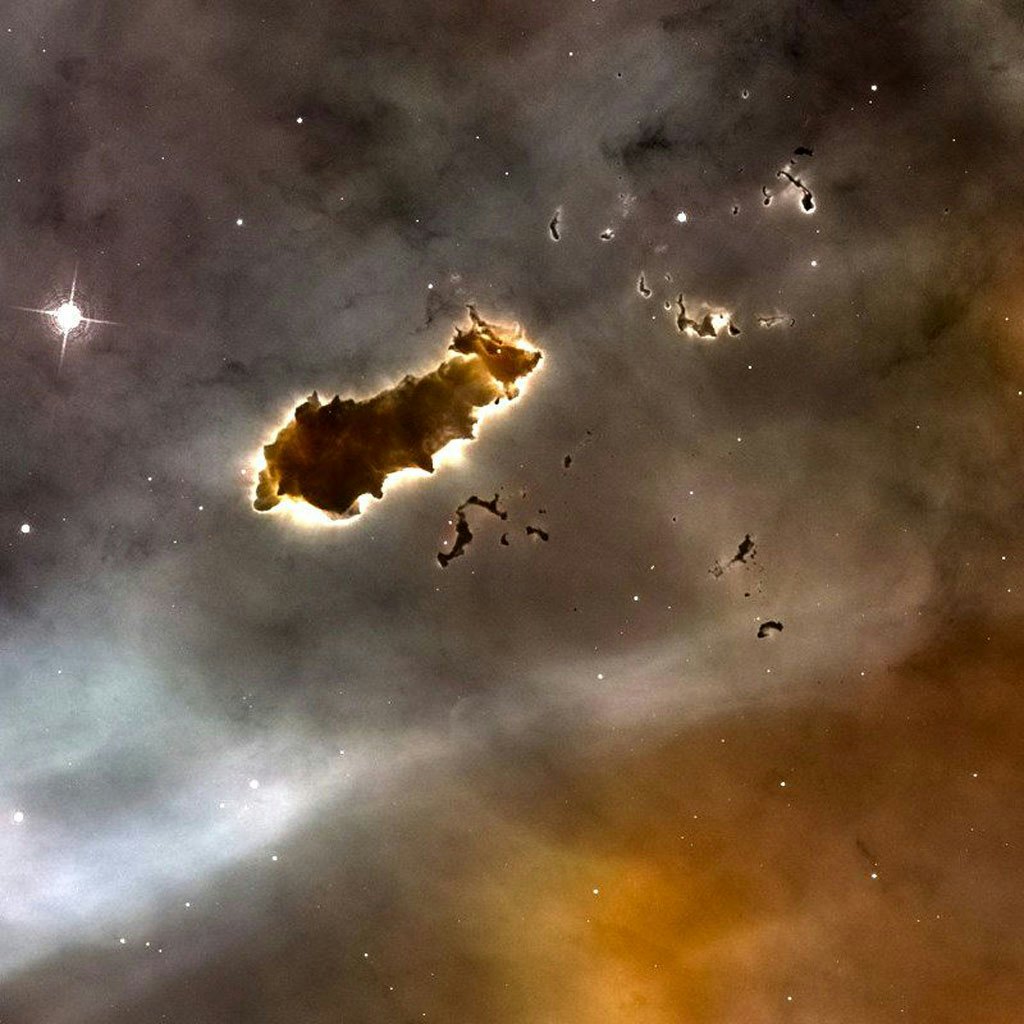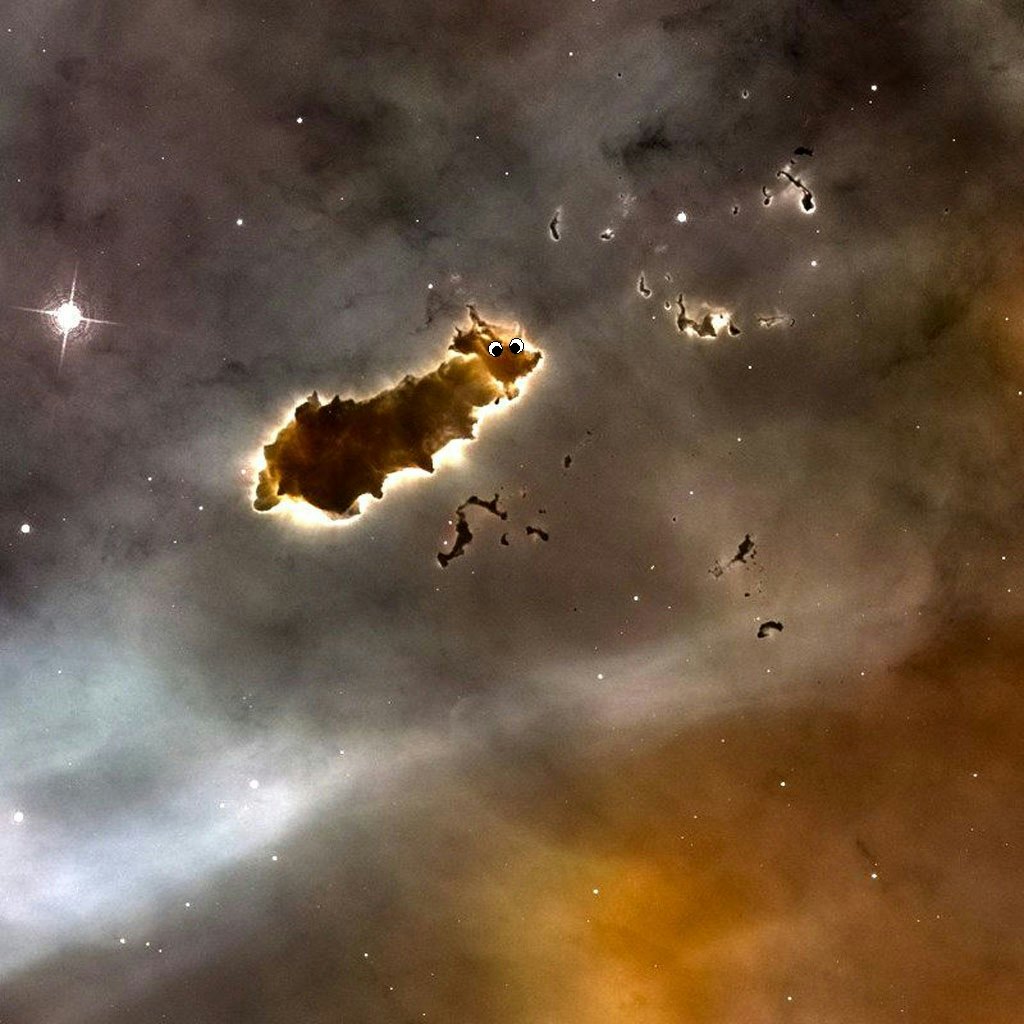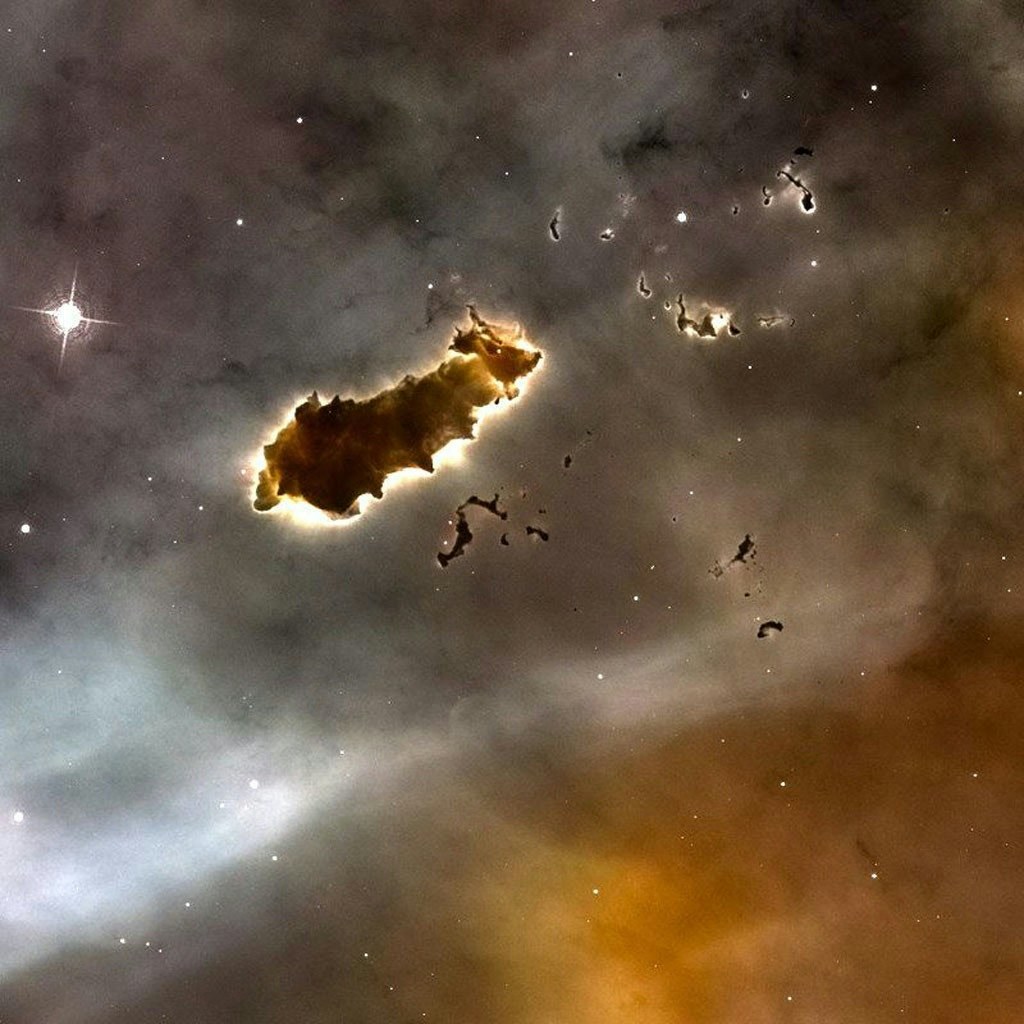
This adorable little nebula makes its home in the cloudscape of the much larger Carina Nebula, about 7,500 light years away from Earth.
Carina is such a large nebula that it actually contains numerous smaller nebulae within its (ahem) nebulous boundaries, like neighborhoods in a big city. Those include the Homunculus Nebula and the Keyhole Nebula, and the Gabriela Mistral Nebula — home of the gorgeous Cosmic Cliffs from one of the James Webb Space Telescope’s very first images. And then there’s this cute little guy: a small, very dense nebula, which happens to look like an escaped Eric Carle character trundling through space. NASA’s Hubble Space Telescope recently captured this image.

The space caterpillar is what astronomers call a Bok globule, even though it’s definitely more caterpillar-shaped than globe-shaped. Bok globules are small clouds of gas and dust, packed so densely that they block visible and ultraviolet light, which is why this little nebula looks so dark.
It’s just about two light years long (the largest actual caterpillar here on Earth is about six inches long, just for reference), and it contains somewhere between 10 and 20 times the mass of our Sun. So what’s a space caterpillar made of? Mostly molecular hydrogen (pairs of hydrogen atoms bonded together), with a side order of carbon dioxide, carbon monoxide, and helium. There’s also a tiny sprinkling of silicate dust.
And just like a real caterpillar will eventually metamorphose into a butterfly, this little Bok globule will eventually collapse under its own mass and form a star system, probably with two or more stars.
Astronomers Bart Bok and Edith Reilly made that exact comparison in 1947, when they described a newly-discovered type of small, dark nebulae as tiny nests of star formation “similar to insect’s cocoons.” But in 1947, astronomers couldn’t actually see what was going on inside the dense cloud of a Bok globule; that requires the ability to see in infrared light, whose longer wavelengths can sneak through dense clouds of gas and dust to reveal things that are invisible in optical or ultraviolet light. Bok and Reilly could only speculate, and in the absence of solid evidence to support their idea, it was generally not accepted.
In the long run, however, Bok and Reilly turned out to be spot-on. The first infrared space telescope, NASA’s InfraRed Astronomical Satellite (IRAS) gave astronomers their first look into a Bok globule in 1990, a discovery announced in a paper partially titled “Bart Bok Was Correct!” Now astronomers know that many Bok globules will eventually form double or even multiple stars, although some may also just eventually drift apart.
Here’s the full image, sans googly eyes:








